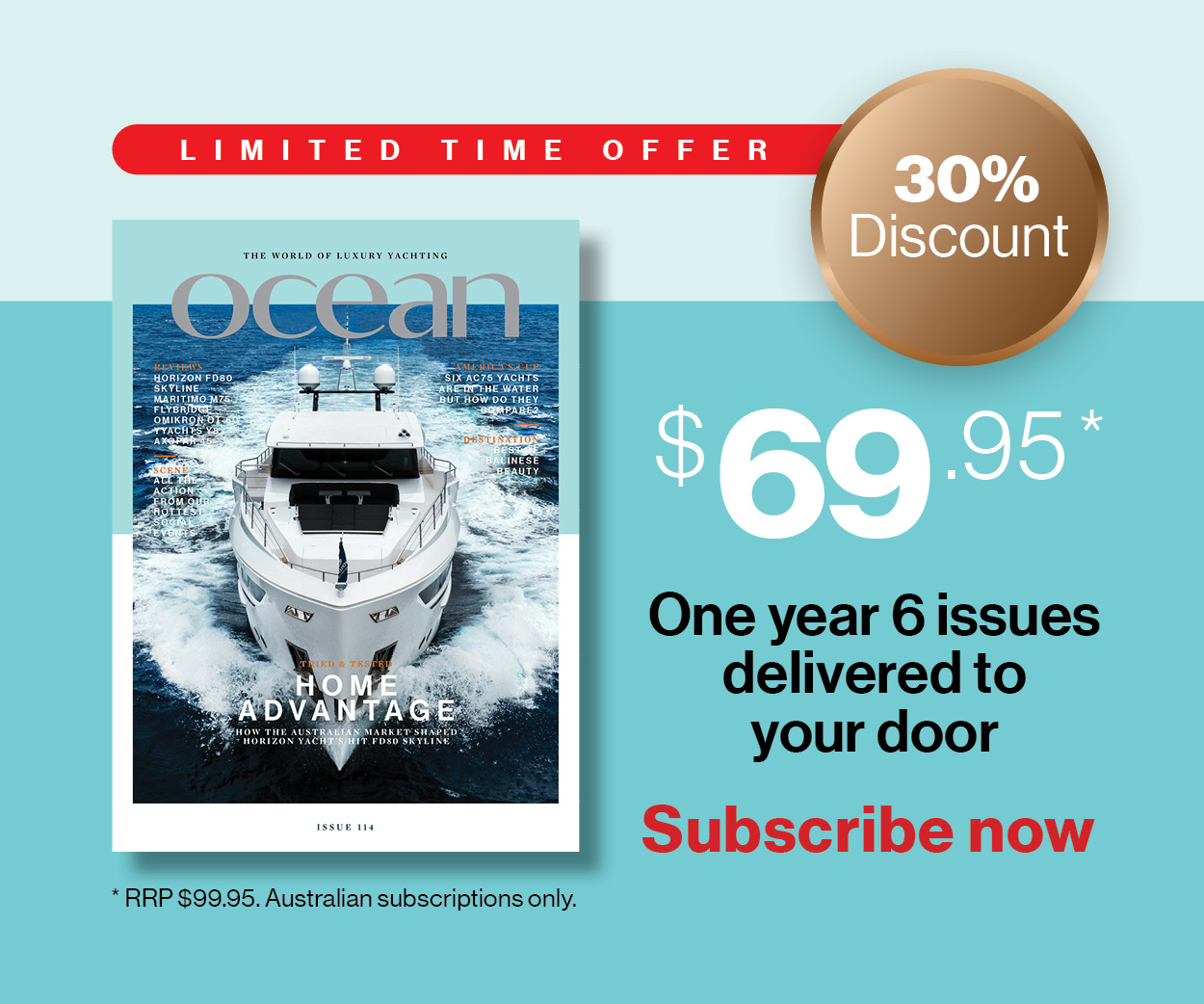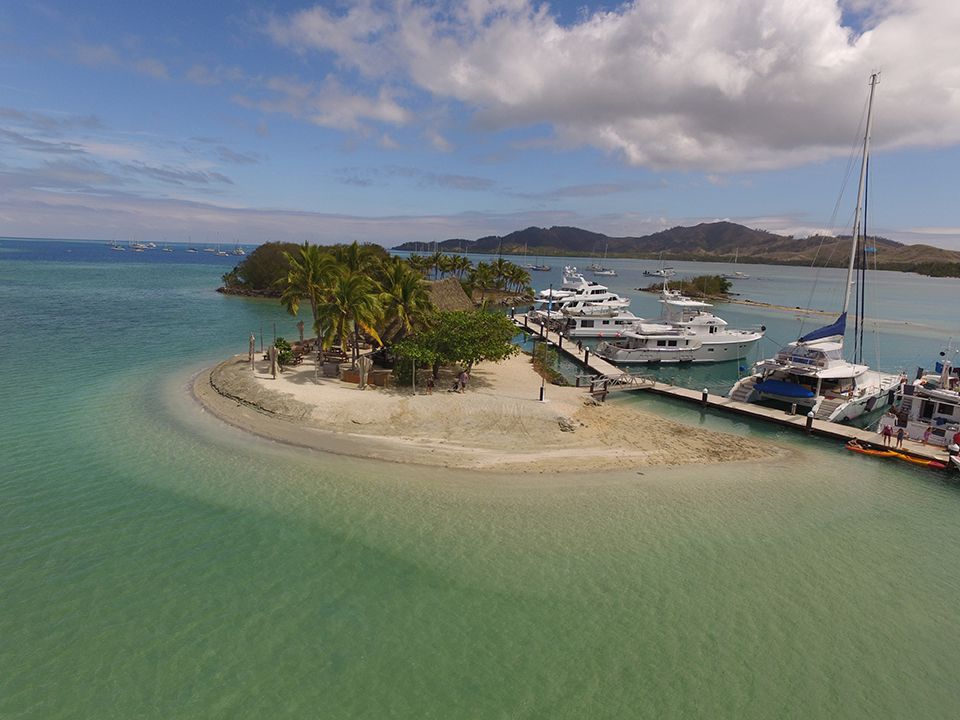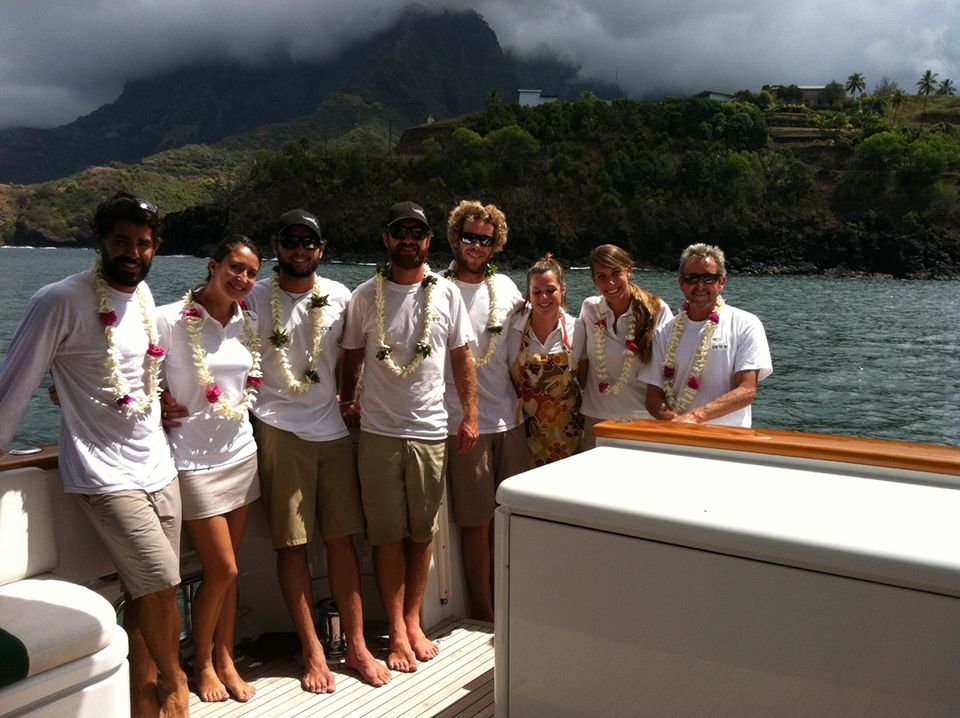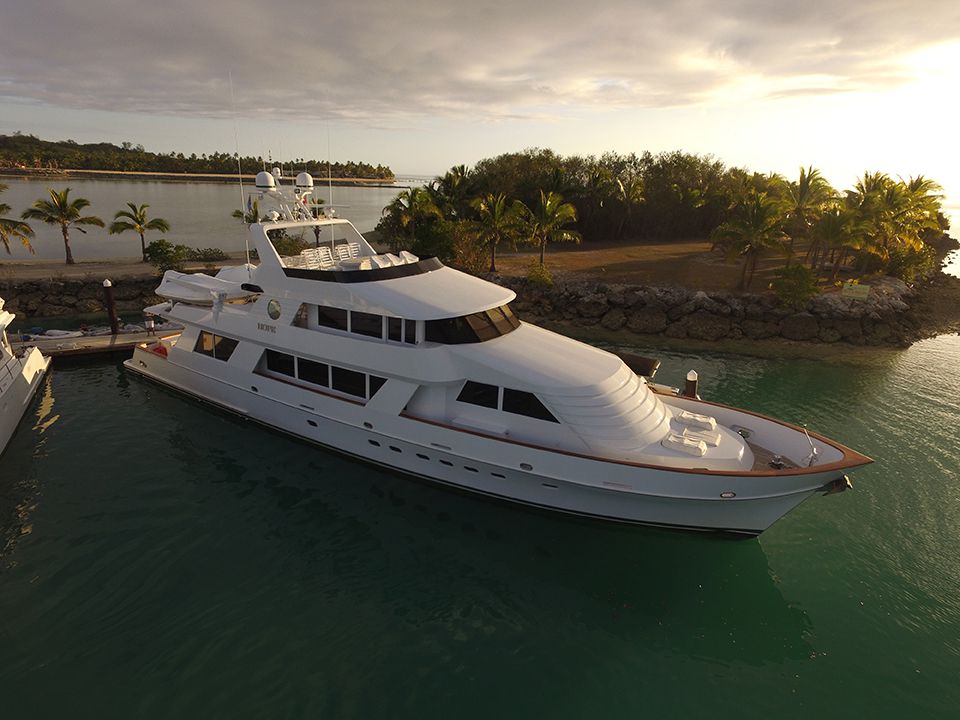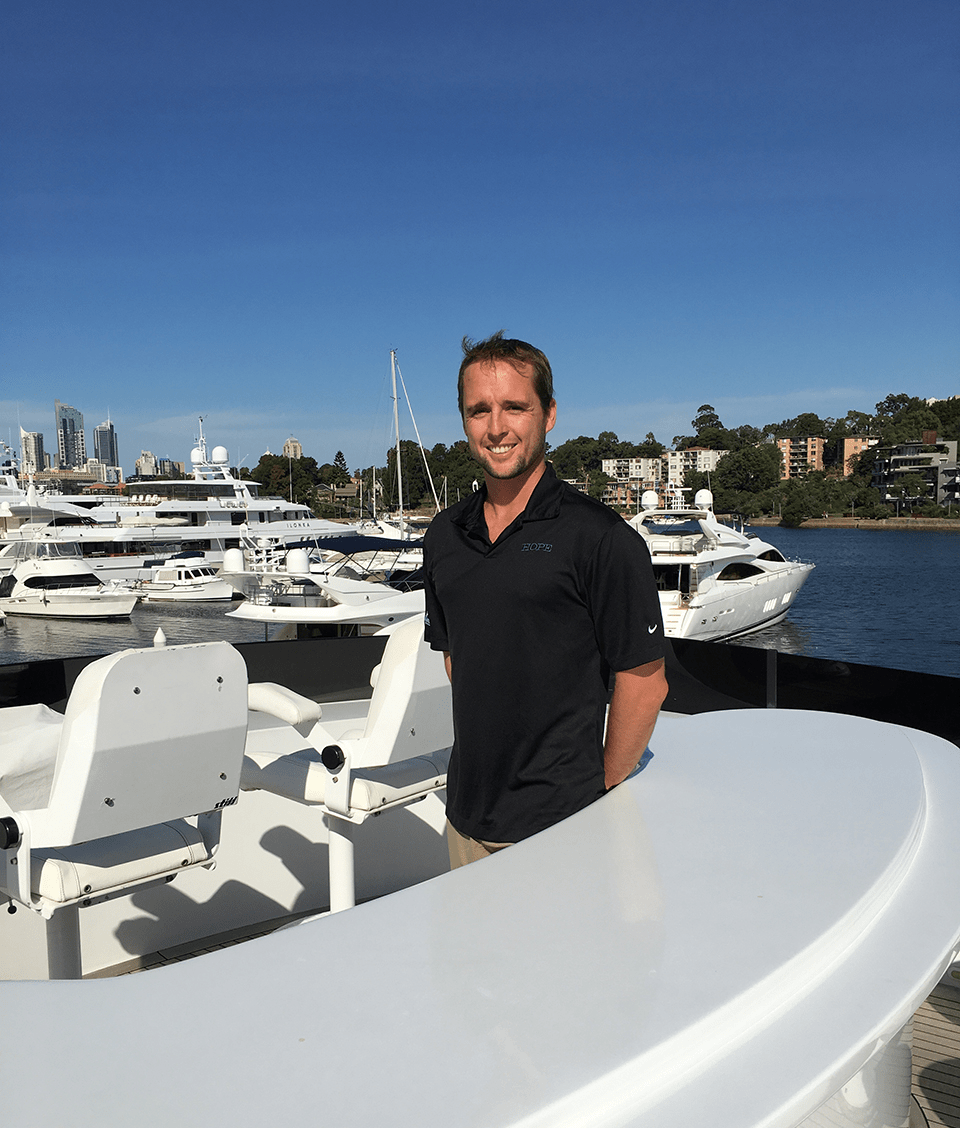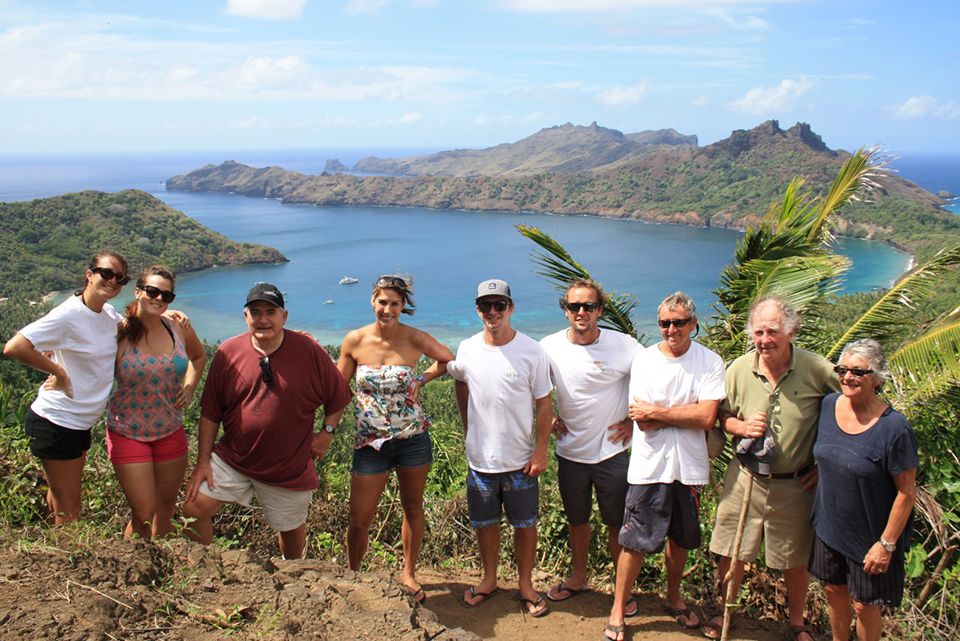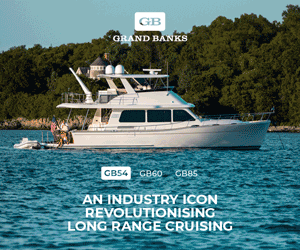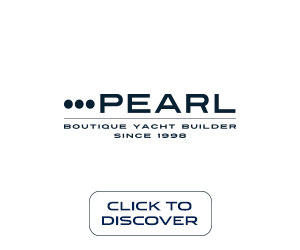Hope for the Pacific
In command of the 31-metre custom motor yacht, Hope, Sydney-born Captain Steve Burton has cruised some of the most stunning locations on Earth.
Written by Hillary Buckman
Photography by Ocean Magazine
26 January 2017
Name: Captain Steve Burton
Nationality: Australian
Age: 31
Current Yacht: M/Y HOPE
Brand/Model: Le Clercq Custom
Past Yachts: M/Y Reverie, S/Y Tabasco, M/Y Laura J
Pacific Crossings: Two (one from Hawaii to California) and one from Panama to Australia
Any other details you would like to share?
Originally “Wesmar V”, the yacht was put through an extensive refit in 1995 and ’96. She was extended 16 feet and given a $10,000,000 makeover (a lot of money in ’96 for a 100-footer). She was even given Showboats Magazine refit of the year and renamed “Lady Diane.” So in our hearts, she is a very special yacht and ‘one of a kind.’
OCEAN: Can you tell us your route to command? How did it all begin?
After completing my trade as a boatbuilder in Queensland at 21 years old, it was only natural to want to travel. I was very fortunate to have a long standing family friend by the name of Peter Mitchell who had been in the yachting industry for a considerate amount of time. Not really knowing anything about the industry, he pointed me in the right direction and even gave me my first job on a sailing yacht called Tabasco. All I knew, was that I wanted to be on boats wherever it was in the world! That opportunity ended up being a long lasting working relationship and I worked under “Mitch” as deckhand for many years, eventually moving into the captains role. He still makes time to help us with deliveries now.
OCEAN: Where have you spent most of your time cruising as a professional yachtsman?
Having never really been all that interested in charter, surprisingly I have never been to the Med. Although, working for some great owners, has kept me around the USA for most of my career. I’ve spent most of my time around the West and East coast, as well as the Bahamas, Caribbean and Central America, however, we have now been in the South Pacific for the past two years, which has so much to offer!
OCEAN: Do you envisage yachting as a lifelong career?
Yachting has been very kind to me and given me such fantastic opportunities, but unfortunately I would have to say no. Don’t get me wrong, I have loved every minute of it! But like many other maritime careers, it is extremely difficult to find a balance between work and your own life. As a lot of people will say, it is a great way to travel and see the world, so it is very hard to break away from, but hopefully the right time will come.
OCEAN: Can you describe some of your most exhilarating and challenging adventures to date?
The passage from Panama to the Galapagos and over to French Polynesia was definitely the most exciting and challenging, especially since we are only a 31-metre motor yacht not built for long ocean passages – many thought it was not possible. Everything considered though, we would not have set out if we ourselves thought it couldn’t be done. On a long passage like this (3,000 nautical miles), obviously there are many things to consider such as the weather and fuel usage and if you don’t calculate them correctly, you can be dead in the water and a long way from anyone. So, once we arrived, it was an extremely satisfying experience.
Cruising to Cuba was also great. Even though it is only a 100-nautical mile passage from Florida, everyone knows (before the current new sanctions) Cuba and America’s history, so it was a little bit of an unknown of what to expect, especially carrying an American crew member. But, with homework, it turned out to be very fun and uneventful, even on our return to Miami.
OCEAN: What would you say is your favourite aspect about being a superyacht captain?
I would have to say the challenges that each day presents. Everyday brings something new and that is what keeps the job interesting. Obviously the perks of being able to travel and see the world are right up there too!
OCEAN: Since leaving East Coast USA, Hope has cruised Cuba, the Turks and Caicos Islands, Virgin Islands, Caribbean, Aruba, through Panama, the Pearl Islands, the Galapagos, Marquesas, French Polynesia, Cook Islands, Fiji and Australia. Was this an easy process? How successful has Hope’s voyaging been so far?
I wouldn’t say an ‘easy’ process, but one that has never been dull. When you list the places we get to explore, most people dream of one day going there, so it is very difficult to complain. Adequate planning and having the right crew however, are a must and doing so has enabled us to be very successful. The one comment I would have to say that put a dent on things are the difficulties associated with cruising the Galapagos Islands. The rules and regulations they have in place for visiting yachts makes it hard to explore other islands, but in hindsight, after seeing what they have to offer, it is understandable, as they are only doing their best to keep it pristine.
OCEAN: What can you tell us about your current role with Hope?
I have now been on board Hope with the current owners for five years. You may think it is a long time and to some it definitely is, but once you have worked your way up and enjoy the crew and owners’ company, it is a very enjoyable job. We are very lucky to have owners that are respectful and laid back, so I like to take my role as a captain professionally, but also, I may not always follow the book – it keeps it fun, just as the owners intend!
OCEAN: You said you have spent the last two years cruising the South Pacific. What has been your favourite destination to visit in our region so far?
Since leaving the USA, I couldn’t split it between French Polynesia and Fiji. French Polynesia has such dramatic and beautiful landscapes, diving and surf that you just do not see anywhere else in the world. Also, understanding and learning about the cultural and maritime history that the Polynesians possess is amazing and makes us feel that cruising 3,000 nautical miles across the Pacific in a 31-metre yacht should be child’s play!
In Fiji, besides the beautiful scenery and amazing reef and surf, you just cannot meet nicer, more genuine people anywhere in the world. You can be a total stranger, but after walking into a village for the first time, you are immediately accepted and feel like you belong, which is a very heartwarming feeling.
In the USA area, you cannot go past Maine and the Bahamas.
OCEAN: Can you share with us where you usually get your maintenance work done? Why?
In Florida, the only yard we used was Roscioli Yachting Centre. We have spent a lot of time there over the years, so they are like family and it was always very welcoming coming back. They have a great bunch of people there and are willing to accept any challenge.
In Australia, our first time to a yard was at Rivergate Marina and Shipyard and that was mainly because of my own history around South East Queensland, knowing what they were capable of. I could not stress enough that their team are very professional and could never do enough to keep you satisfied. We had quite a large list of projects after two years and almost 18,000 nautical miles, but with their knowledge and expertise, all jobs seemed to be an easy task, so the whole process was very streamlined. The project management, I thought, was also extremely diligent and the perfection showed in the end outcome.
OCEAN: Your owner bought Hope in the US and spent many months (almost exactly two years) cruising back down to your home port of Sydney. Many more Australian owners are now doing this. Do you have any advice for them before they start this process?
For anyone who wishes to cruise the South Pacific, it is imperative that you carry lots of spares on board and prepare well, especially for an American powered yacht. There are always your shipping agents like Yacht Chandlers or National Marine, but depending on budget, this may not always be available. Besides that, having local agents to help with clearances is very handy and in some places like French Polynesia, Fiji and Australia, it is basically a must. Pascal from Tahiti Yacht Services and Carol, Josie and the team at Yacht Partners Fiji are definitely recommendations. Also, keep in mind, that the charts available for places like Fiji are very limited and not very detailed, so be prepared and of course, take your time – there is too much to see and do, so get used to island time!
OCEAN: What honest and direct advice do you have for the Australian maritime authorities, governments and the superyacht industry association types on how to better serve the needs of both Australian-owned and visiting superyachts to make their voyage down under run as smoothly as possible?
I’m not really sure what the authorities are trying to achieve with certain restrictions, especially with the 30 or 35-metre rule. That one doesn’t really really apply to us, but it makes it extremely difficult for cruising yachts to enjoy the region. I understand rules and why they are put in place, but it should be taken into account that superyachts are run by professionally qualified crew and that should be respected.
OCEAN: If young Australians and New Zealanders are looking to enter the yachting industry as a profession, what advice do you have for them?
Keep an open mind and enjoy the ride while it lasts. It is not for everyone, so don’t be afraid of hard work and don’t over abuse the perks!
OCEAN: If you weren’t in the yachting industry what do you think you’d be doing?
I would still be on the water – it’s impossible to keep me away from it. After yachting, I would love to move into tug boats.


